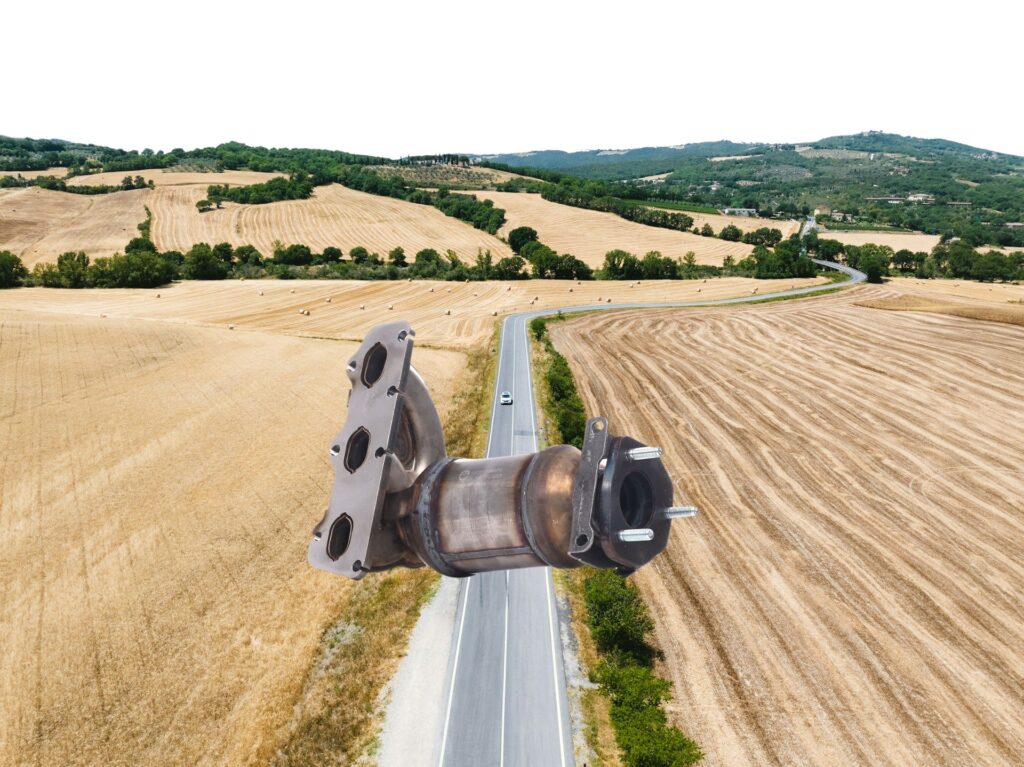Here’s the thing; electric cars might be grabbing all the headlines, but for millions of drivers, they’re still not a practical option. Whether it’s the rumoured eye-watering prices, tricky charging logistics, or simply that the timing isn’t right, many of us will be driving petrol and diesel cars for years to come. The good news? There are countless ways to slash your carbon footprint without going electric.
Maintain Your Car’s Vital Systems
The environmental impact of your vehicle isn’t just about what comes out of the exhaust pipe—it’s about how efficiently your car converts fuel into motion. A well-maintained car can emit significantly less CO2 than a neglected one, even if they’re the same model, helping avoid breakdowns in the process, too. Think of it as keeping your home energy-efficient: just as you wouldn’t leave windows open with the heating on, you shouldn’t expect your car to run efficiently without regular maintenance.
Keep Your Catalytic Converter Happy
The catalytic converter is perhaps the unsung hero of emissions control, quietly transforming harmful pollutants into less damaging substances. Yet many drivers unknowingly damage these expensive devices through poor driving habits. A healthy ‘cat’ can reduce your car’s toxic emissions by up to 90%, but it needs the right conditions to work effectively.
The key to catalytic converter health lies in how you use your car. Short journeys are particularly problematic — the system needs time to reach its optimal operating temperature. Regular motorway runs aren’t just enjoyable; they help clear out the system and maintain its efficiency. Think of it like exercising — your car sometimes needs a good run to stay healthy.
Essential maintenance includes:
- Addressing engine warning lights promptly
- Using the correct fuel grade
- Scheduling regular motorway runs
- Having it checked during services

Regular Oil Changes Matter
Engine oil is the lifeblood of your car’s efficiency. Modern engines operate with incredibly fine tolerances, and the right oil can make the difference between efficient combustion and wasteful burning of fuel. As oil ages, it becomes less effective at reducing friction and cleaning the engine, leading to increased fuel consumption and emissions.
Contemporary synthetic oils are remarkable at reducing internal friction, which directly translates to lower emissions and better fuel economy. However, they can only do their job if changed regularly and maintained at the correct level. Regular oil changes might seem expensive, but they’re far cheaper than the potential repairs—and environmental impact—of running with degraded oil.
Key practices include:
- Following manufacturer service intervals strictly
- Using the correct grade and specification
- Checking levels monthly
- Changing the oil filter with every oil change

Tyre Pressure: The Unsung Hero
Tyre pressure might seem like a minor detail, but it has a surprising impact on your car’s efficiency. When tyres are underinflated, they create more rolling resistance, forcing your engine to work harder and use more fuel. Think of it like trying to push a heavily loaded wheelbarrow — it’s much harder work than pushing one that’s rolling freely.
Modern tyres are engineered to maintain their pressure for longer, but they still need regular checks. The right pressure isn’t just about efficiency—it affects handling, braking, and tyre life too. A properly inflated tyre will roll more easily, requiring less energy and therefore producing fewer emissions.
Monthly maintenance should include:
- Checking pressures when tyres are cold
- Adjusting for heavy loads
- Inspecting for damage
- Checking tread depth
Master Eco-Driving Techniques
The way you drive has an enormous impact on your car’s emissions. Efficient driving isn’t just about going slower—it’s about being smarter with how you use the car’s energy. Think of it as being similar to managing your household budget: small, consistent savings add up to significant results over time.
The Gentle Art Of Acceleration
Smooth, progressive driving isn’t just more comfortable – it’s significantly more efficient. Modern engines are designed to operate most efficiently under gentle acceleration, and harsh driving can use significantly more fuel. Imagine you’re carrying a hot drink on your dashboard; this mindset naturally encourages smoother inputs and better anticipation.
The key to efficient acceleration is planning ahead. By looking further down the road, you can anticipate changes in traffic flow and adjust your speed gradually rather than rushing up to traffic lights only to brake heavily. This not only saves fuel but reduces wear on your vehicle’s components.
Effective techniques include:
- Accelerating smoothly and progressively
- Maintaining consistent speeds
- Looking well ahead for hazards
- Using cruise control on motorways when safe


Gear Selection Strategy
Modern cars are designed to operate efficiently when in the right gear, but many drivers either change up too late or rely too heavily on lower gears. Understanding your engine’s optimal operating range can significantly reduce fuel consumption and emissions.
Petrol and diesel engines have different characteristics, but both benefit from being in the highest appropriate gear for the conditions. Listen to your engine—if it’s spinning faster than necessary, you’re likely using more fuel than you need to.
Best practices include:
- Changing up before 2,500rpm in petrol cars
- Shifting before 2,000rpm in diesel engines
- Using higher gears whenever possible
- Avoiding labouring the engine in too high a gear
Journey Planning
One of the most effective ways to reduce your carbon footprint is to plan your journeys more efficiently. This isn’t just about taking the shortest route—it’s about considering when and how you travel to minimise your environmental impact.
Modern technology makes this easier than ever. Navigation apps can show real-time traffic conditions and suggest more efficient routes. Combining multiple short trips into one longer journey allows your engine to reach its optimal operating temperature and your catalytic converter to work effectively.
Smart planning includes:
- Combining multiple errands into single trips
- Avoiding peak traffic times when possible
- Using real-time traffic information
- Considering park-and-ride options for city centres
Weight Management
Every extra kilogram your car carries requires more energy to move, increasing fuel consumption and emissions. While you can’t change your car’s basic weight, you can ensure you’re not carrying unnecessary items. It’s surprisingly easy to accumulate ‘just in case’ items that rarely, if ever, get used.
Regular audits should address:
- Removing unnecessary items from the boot
- Clearing out door pockets and storage areas
- Carrying only essential tools and equipment
- Removing seasonal items when not needed
Stop-Start Technology
If your car has stop-start technology, use it. Modern systems are designed to reduce emissions and save fuel without harming the engine. The fuel saved might seem minimal per stop, but it adds up significantly over time, particularly in urban driving.
Making The Decision To Upgrade
If your current car is more than a decade old, upgrading to a newer conventional model might significantly reduce your carbon footprint. Modern petrol and diesel engines are remarkably efficient, with sophisticated emissions control systems and better fuel management.
Consider these factors:
- Real-world fuel economy figures
- Emissions ratings
- Maintenance costs
- Overall environmental impact of manufacturing
The Bottom Line
Making your existing car greener isn’t about dramatic changes—it’s about understanding how your vehicle works and making informed decisions about how you use and maintain it. The cumulative effect of these adjustments can reduce your carbon footprint substantially while often improving your car’s reliability and your driving experience.
Start with the basics: regular maintenance, thoughtful driving, and journey planning. As you become more comfortable with these changes, you can explore more advanced modifications and techniques. Remember, every reduction in fuel consumption directly translates to a reduction in carbon emissions—and that’s a win for both the environment and your finances.
Think of your car as an ecosystem: each component and driving decision affects overall efficiency. By taking a holistic approach to reducing your car’s environmental impact, you can make a significant difference without making the switch to electric just yet.





